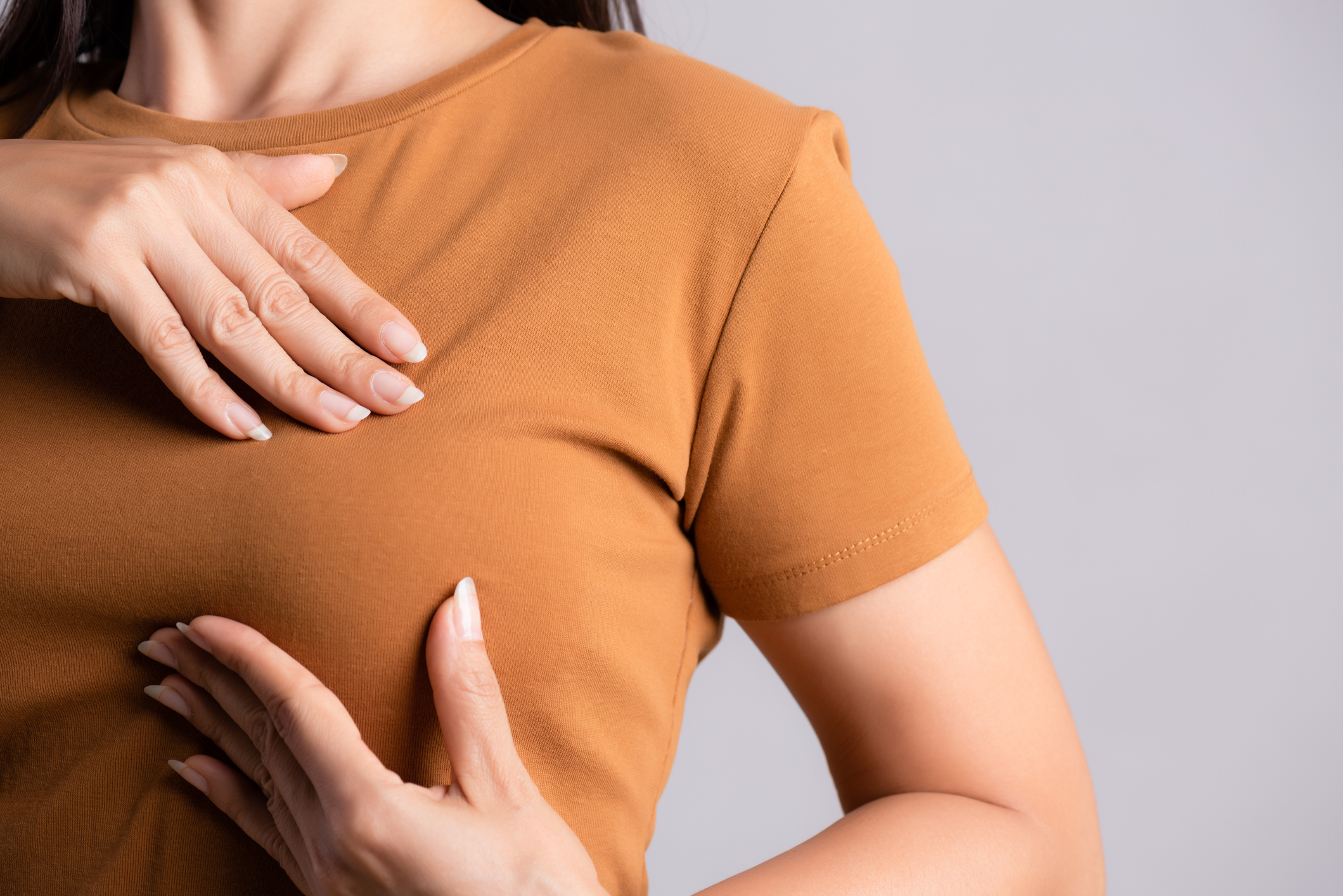Get Easy Health Digest™ in your inbox and don’t miss a thing when you subscribe today. Plus, get the free bonus report, Mother Nature’s Tips, Tricks and Remedies for Cholesterol, Blood Pressure & Blood Sugar as my way of saying welcome to the community!
10 ways to reduce your risk of breast cancer

Every year in October we’re reminded about a danger that currently affects more than three million women across the United States, and many more across the globe: breast cancer.
But then the months tick on… and we go about the daily grind.
With or without those pink ribbons to remind you, the Breast Cancer Awareness campaign has done a very good job of getting the message of early screening across to the masses. So what I’m going to say about mammograms may surprise you…
If you’re relying on them to save you from breast cancer you could be in trouble. But you’re not alone. Millions of women are operating under a false sense of security when it comes to mammograms. And it’s a realization that even the American Cancer Society (ACS) has come to accept — and change.
The ACS is recommending mammograms for women beginning at age 45 rather than 40, saying that annual routine manual breast exams can be discarded. The ACS now says women 55 and older can transition to mammograms every other year.
With the threat of breast cancer so prevalent why would they recommend you hold back?
Because an exhaustive review of the medical literature shows these measures just aren’t very effective, according to the group. “The chance that you’re going to find a cancer and save a life is actually very small,” according to Dr. Otis Brawley, the society’s chief medical officer.
While mammograms save some lives, they can also cause harm…
One problem with mammograms is that they have a relatively high false-positive rate, which means women often undergo unnecessary and painful procedures that reveal no cancer threat.
But more concerning is that mammograms use ionizing radiation — known to cause cancer — to provide a radiological image of the breasts.
A study by researchers from the Nordic Cochrane Center in Denmark reviewed the benefits and negative effects of seven breast cancer screening programs on 500,000 women — and the results were shocking. For every 2,000 women who received mammograms over a 10-year period, only one would have her life prolonged, but ten would be harmed. That’s because mammograms can actually increase a woman’s risk of developing breast cancer by as much as three percent per year by irradiating the breast cells and triggering breast cancer.
10 ways to reduce your breast cancer risk
Don’t get me wrong. The breast cancer awareness campaign does an awful lot of good. But there is much more you can do to actively reduce your risk of breast cancer, without harming your body or increasing your risk for any disease or illness, including…
- Get your quota of vitamin D. Getting enough vitamin D may be the most important way to reduce this risk. Researchers from the University of California San Diego School of Medicine found women with vitamin D levels of 60 ng/ml or higher were a fifth less likely to get breast cancer than women with levels below 20 ng/ml. Most of our vitamin D is made by the skin in response to sunlight. Only a small amount comes from diet, and it was recently confirmed that the level of vitamin D matters.
- Stop eating this cancer-causing food. If you want to reduce your risk of developing breast cancer — give up sugar. Many studies appear to conclusively identify sugar consumption, specifically table sugar and high-fructose corn syrup, as a major risk factor for breast cancer and its metastasis. And Americans are especially at risk because we consume 30 percent more fructose than we did 20 years ago, and the amount has increased year after year.
- Naturally boost your cancer-killing hormone. One of the important jobs of hormones is telling your cells when and how they should multiply. Just as easily as hormones can increase cancer risk, they can also slash it significantly. A study published in 2014 in the journal PLoS One found that melatonin, the sleep hormone, was effective against tumor growth and cancerous cell production in mice with triple-negative breast cancer.
- Take oral hygiene very seriously. A recent study shows that women with periodontal disease are more likely to develop breast cancer than women who do not. And, a bit of information from the study that’s not as surprising but compounds the threat — a history of smoking significantly affected the risk.
- Lose weight. Many studies show that high levels of the hormone leptin in your body may make you more susceptible to breast cancer. Leptin actually talks to inflammatory molecules that induce breast cancer. When this “crosstalk” is cut off, it reduces breast cancer. When one has excess fat, leptin enhances breast cancer cell growth by turning off genes that kill cancer cells, and turning on genes that make cells more receptive to estrogens, which increases breast cancer development.
- Keep exercising. In an eight-year study, older women who engaged in an exercise program enjoyed a 10 percent decreased risk of invasive breast cancer in comparison to women who didn’t exercise. On the other hand, women who had exercised when they were younger, but had stopped moving around very much as they got older, did not have a lower risk of cancer. So the important lesson here is: No matter how hard you exercised when you were younger — keep it up as you age.
- Have an egg for breakfast. The choline found in eggs is not technically a vitamin, but it is an important nutrient for supporting your health. And, research shows, it can shrink the chances of developing tumors. A study at the University of North Carolina shows that consuming choline in eggs can reduce breast cancer risk by 24 percent.
- Eat more peaches. Researchers at Washington State University found that peaches help inhibit breast cancer growth and keep cancers from spreading. They recommend eating this fruit every day — up to three peaches. In laboratory studies, the researchers found that high levels of peach polyphenols prevent tumors from growing and cut off their blood supply. The chemicals also restrict the production of enzymes that help cancer spread.
- Drink coffee. A team of scientists at the Karolinska Institutet decided to compare the coffee-drinking habits of a subset of women without breast cancer to a group of women with the disease. What they found was interesting. It turns out the women without breast cancer were regular coffee drinkers, whereas the women with breast cancer were not. Numerous studies have revealed the positive health benefits of a daily coffee habit.
- Cut-out or greatly decrease alcohol. Researchers at the University of Houston in Texas say recent findings suggest that alcohol exposure affects several cancer-related pathways and mechanisms, shedding light on the so-called cross-talk between alcohol and cancer-related gene pathways and networks. In other words, alcohol boosts a woman’s risk of getting breast cancer. Current dietary guidelines recommend that women keep their alcohol consumption to no more than one drink daily, but to be on the safe side — and based on this most recent information — you may want to consider cutting out alcohol consumption completely.
It’s important to remember that men are not immune to breast cancer either, and the tips above may also be helpful for men to follow, though most of the research associated included women. The Male Breast Cancer Coalition is a great source of information.
Editor’s note: Did you know that when you take your body from acid to alkaline you can boost your energy, lose weight, soothe digestion, avoid illness and achieve wellness? Click here to discover The Alkaline Secret to Ultimate Vitality and revive your life today!












